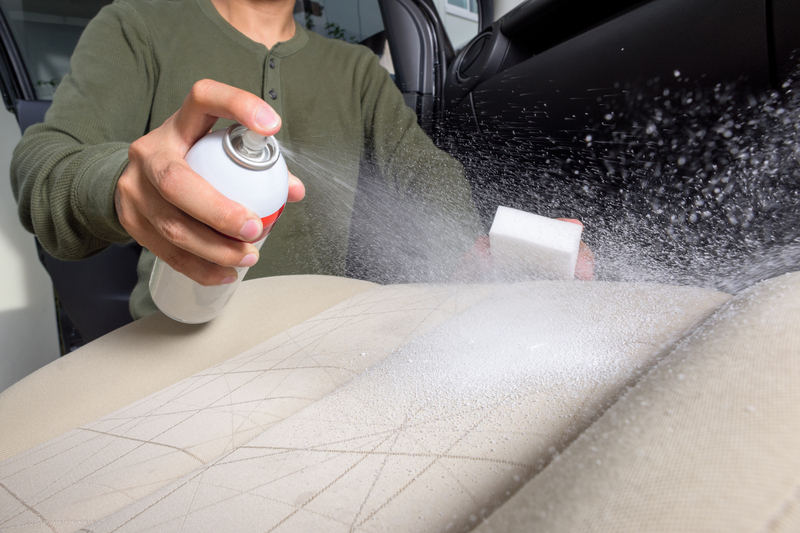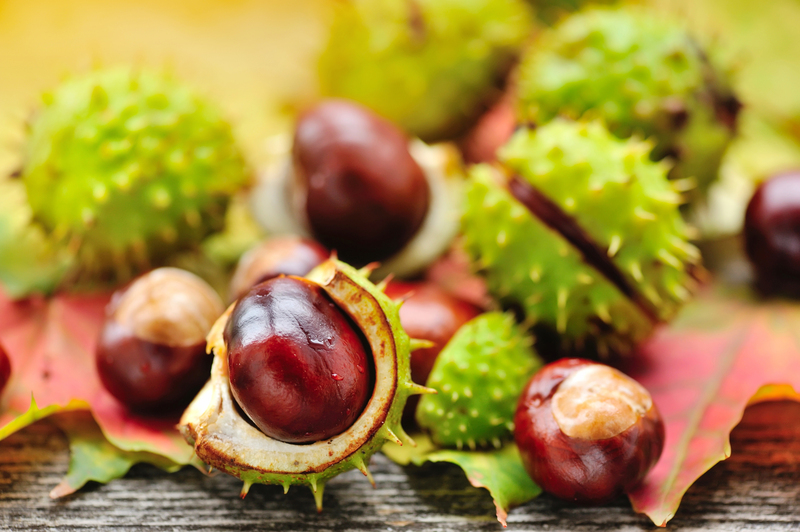The Science Behind Perfectly Clean Windows
Posted on 02/07/2025
The Science Behind Perfectly Clean Windows
Windows are an essential part of any building--they let in light, provide beautiful views, and offer ventilation. But if your windows are marred by streaks, smudges, or dust, they can detract from the overall appearance of your home or office. Achieving crystal-clear, spotless windows isn't just about elbow grease--there's science at play. In this comprehensive article, we'll unveil the science behind perfectly clean windows, exploring the physics and chemistry of cleaning, preferred methods and solutions, and tips for effective streak-free results.

Why Is It So Hard to Get Windows Truly Clean?
At first glance, cleaning windows seems simple: apply cleaner, wipe, and admire. However, experienced cleaners know it's not always that straightforward. Before diving into solutions, let's understand why achieving perfectly clean windows is such a challenge.
The Enemies of Spotless Windows
- Dirt and Dust: Atmospheric dust, pollen, and pollution can settle on glass.
- Oily Residues: Fingerprints, smoke, and cooking vapors leave greasy marks that are resistant to water alone.
- Hard Water Stains: Minerals like calcium and magnesium in tap water can leave behind tough, cloudy stains after evaporation.
- Soap Scum and Detergent Residue: Excess cleaner or improper rinsing can result in streaks or cloudy films.
- Static Electricity: It makes dust stick stubbornly, especially on dry days.
The Role of Glass Structure and Light
To appreciate the science of window cleaning, consider how glass is structured at a microscopic level. Glass may appear smooth to the naked eye, but under a microscope it's full of undulations and pores. These tiny crevices trap dirt and oil.
When light passes through--or is reflected by--these contaminants, it scatters in unpredictable ways, which creates the appearance of a dull or streaky window. Achieving a perfectly transparent window means removing as much of this microscopic dirt--as well as visible grime--as possible.
The Chemistry of Cleaning: How Cleaners Work
To effectively combat dirty windows, it helps to understand the chemistry behind cleaning solutions. Why do some cleaners work better than others? What makes a window truly sparkle?
The Role of Surfactants
Most commercial and homemade window cleaners contain surfactants--special molecules with a "water-loving" (hydrophilic) end and an "oil-loving" (hydrophobic) end. When applied to glass:
- The hydrophobic end attaches to oily dirt and grime.
- The hydrophilic end attaches to water molecules.
As a result, surfactants loosen and lift away greasy residues, suspending them in the water so you can easily wipe them off, leaving the glass spotless.
The Importance of pH Levels
Cleaning solutions also differ in pH, affecting how well they remove various stains:
- Alkaline Cleaners (high pH): Excellent for breaking down organic soils like oils and grease, commonly found in kitchen windows.
- Acidic Cleaners (low pH): Effective for tackling mineral deposits from hard water on bathroom or outdoor glass.
For stress-free window cleaning, choosing the right pH-balanced solution is crucial.
Solvents and Alcohols: The Key to Streak-Free Shine
Window cleaners often contain alcohols (such as isopropyl alcohol) or ammonia. These volatile compounds do several things:
- Dissolve oily residues that water cannot touch.
- Evaporate rapidly, minimizing streaking since little residue is left behind.
That's why DIY solutions often include a splash of vinegar (mild acid), rubbing alcohol, or even a drop of dish soap for perfectly clean windows.
The Mechanics of Cleaning: Tools and Techniques
Even with the best cleaner, your tool and technique can make or break the process. Here's what the science says about how to get your glass truly pristine.
Squeegees: The Professional's Choice
Squeegees are beloved by window cleaning pros for a reason. The rubber blade scrapes the cleaning solution (with loosened dirt) off in a single swipe. Here's why:
- Reduces Residue: Unlike cloth, which can redeposit dirt, the squeegee removes all moisture rapidly and cleanly.
- Prevents Streaks: The even edge of the blade prevents lines and streaks, leaving flawless glass behind.
To maximize results: Wipe the blade with a lint-free rag after every pass to prevent dragging dirt.
Microfiber Cloths and Their Magic
Microfiber cloths are made from ultrafine synthetic fibers (often 100 times thinner than a human hair!). These fibers have several unique cleaning benefits:
- Electrostatic attraction: They trap and lift dust and even bacteria.
- Absorption: Microfibers hold several times their weight in water, making them ideal for absorbing cleaning fluids and leaving glass dry.
Tip: Use a clean, dry microfiber cloth for your final polish to get that perfectly clear window finish!
Paper Towels, Newspaper, or Cloth?
Old traditions recommend newspaper for step-free windows, but this method can leave behind tiny ink particles and is no longer environmentally friendly. Paper towels, unless they're high-quality, might leave lint, while standard cloths can leave streaks due to detergent or fabric softener residues.
For the cleanest windows possible, always opt for lint-free microfiber or a professional squeegee.
Environmental Factors Affecting Window Cleaning
Achieving that magazine-cover gleam isn't just about how you clean; environmental conditions matter, too!
The Role of Temperature and Humidity
- Warm, Dry Days: Cleaning agents evaporate fast, increasing the risk of streaks before you can wipe them away.
- Cold, Damp Weather: Slower drying allows more dirt to be wiped up but can leave watermarks if not carefully dried.
Insider tip: Schedule window cleaning for cool, cloudy days to give yourself more time to remove cleaner without streaking.
Sunlight and Streaks
Direct sunlight can heat window glass, causing cleaning fluids to evaporate too quickly. This dramatically increases streak risk. Always work in the shade or on the side of the house opposite the sun for best results.
Practical Steps for Perfectly Clean Windows
With the science covered, let's walk through a proven process for achieving glimmering, spotless windows every time.
Step-by-Step Guide for Crystal Clear Windows
- Dust First: Use a dry microfiber cloth or a duster to remove loose dust and cobwebs. This prevents smearing dirt around during cleaning.
- Apply Cleaner: Spray your chosen window cleaning solution liberally, or use a bucket and sponge for larger panes.
- Scrub: Use a soft, non-abrasive sponge or microfiber to agitate the dirt--pay special attention to corners and edges.
- Squeegee or Wipe: Wipe away cleaner using a squeegee in a systematic top-to-bottom pattern. If using a cloth, work in a circular or zigzag motion.
- Final Buff: Polish with a dry microfiber for a sparkling, streak-free shine.
- Repeat for Inside and Outside: Glass is dirtier outside, but don't neglect the inside surfaces for a truly perfect result.
Pro Tips for Perfect, Streak-Free Glass
- Distilled water (instead of tap) prevents mineral deposits and build-up for truly clear windows.
- Avoid overuse of product. More isn't always better; excess solution can cause streaks.
- Clean window screens and sills regularly, as dust and grime from these often transfer to the glass.
- Work efficiently--especially on warm days--to stop cleaner drying before you can wipe it away.
DIY, Eco-Friendly, and Commercial Cleaners: What's Best?
Not all cleaning solutions are created equal! Here's how various window cleaning approaches stack up.
DIY Window Cleaning Solutions
- Vinegar and Water (50/50): Cuts through mineral deposits and light grease, leaving a streak-free finish. Avoid on stone sills, as vinegar can etch natural stone.
- Dish Soap and Water: A few drops of dish soap in a bucket of water create an effective solution for greasy films and dirt. Rinse with clear water to avoid soap residue.
- Alcohol-Based Mix: Isopropyl alcohol (or even a splash of vodka) with water vaporizes quickly, helping to prevent streaks.
Eco-Friendly Store-Bought Solutions
- Many brands offer plant-based, biodegradable cleaners free of harsh ammonia or artificial dyes.
- Look for certifications like EPA Safer Choice or Green Seal for truly eco-friendly performance.
Commercial Window Cleaning Products
- Typically contain powerful surfactants and solvents for fast, professional-grade results.
- May use anti-static agents to repel dust post-cleaning.
- Ammonia-based products cut tough grime but should be used with caution around pets and in well-ventilated areas.
Beyond Cleaning: How to Keep Windows Bright Longer
Once your windows are *pristinely* clean, how can you maintain their sparkle? Science offers a few clever tricks and technologies.
Hydrophobic and Self-Cleaning Glass
Modern window technologies use special hydrophobic (water-repelling) coatings. When rainwater hits treated glass, it forms beads and carries away dirt as it rolls off, minimizing streaks and water spots.
There are even self-cleaning glass options with titanium dioxide coatings. These harness sunlight to break down organic dirt chemically, which then rinses away more easily with rainwater. This is the pinnacle of effortless, perfectly clean windows!
Regular Maintenance
- Clean screens and sills each season.
- Wipe up water drips or fingerprints immediately.
- Consider installing awnings or roof overhangs to reduce direct rain and dust accumulation.

The Fascinating Physics of Streak-Free Windows
The final piece of the puzzle is understanding streak formation. Why are some windows perfectly clear, and others full of lines, even after a thorough cleaning?
The Science of Drying
- Surface tension causes droplets to form as liquid dries, leaving behind dissolved minerals ("hard water spots") or cleaner.
- Uneven drying--from too much cleaner or warmth--causes some parts of the window to dry faster, leaving behind concentrated residues in streaks.
- Mechanical action (rapid, even motion with a squeegee or microfiber) quickly removes solution before it can deposit silicones, minerals, or detergents.
Conclusion: The Science of Spotless, Perfectly Clean Windows
Achieving perfectly clean windows is both an art and a science. By understanding the challenges, using effective chemistry, and employing the right cleaning mechanics, anyone can get sparkling, streak-free glass. With a little knowledge, proper tools, and technique, your windows can let in the light--and leave dirt, residue, and streaks in the past.
Your clear, shimmering, and gleaming windows will be the envy of the neighborhood!



